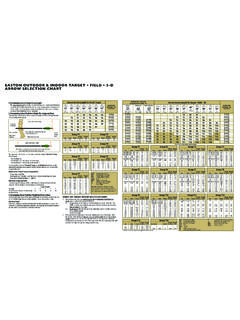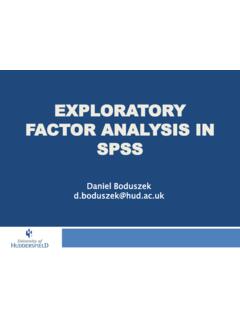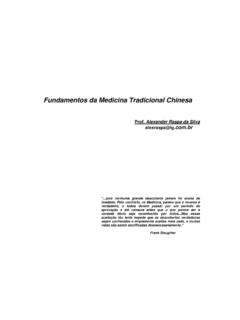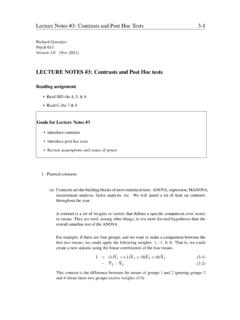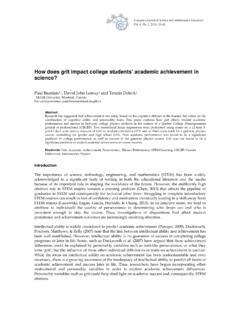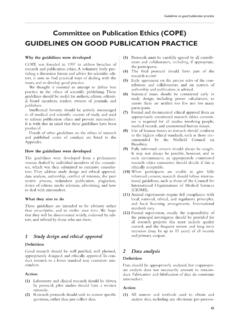Transcription of Non-Parametric Tests in SPSS (between subjects) - Webs
1 Non-Parametric Tests in SPSS (between subjects) Dr Daniel Boduszek Introduction Mann-Whitney U SPSS procedure Interpretation of SPSS output Reporting Kruskall-Wallis SPSS procedure Interpretation of SPSS output Reporting Introduction Non-Parametric Tests are based on ranks rather than raw scores: SPSS converts the raw data into rankings before comparing groups (ordinal level) These Tests are advised when scores on the DV are ordinal when scores are interval, but ANOVA is not robust enough to deal with the existing deviations from assumptions for the DV distribution (check assumptions of ANOVA ) If the underlying data meet the assumptions of parametricity, use parametric Tests they have more powerIntroduction These are sometimes referred to as distribution free Tests .
2 Because they do not make assumptions about the normality or variance of the data If you have decided to use a Non-Parametric test then the most appropriate measure of central tendency will probably be the medianLimitations of Non-Parametric methods Converting ratio level data to ordinal ranked data entails a loss of information This reduces the sensitivity of the Non-Parametric test compared to the parametric alternative in most circumstances sensitivity is the power to reject the null hypothesis, given that it is false in the population lower sensitivity gives a higher type 2 error rate Many parametric Tests have no Non-Parametric equivalent Two way ANOVA, where two IV s and their interaction are considered simultaneouslyMann-Whitney U Design: Non-Parametric 1 continuous DV (criminal thinking) 2 comparison groups (IV) -different participants in each group (violent and non-violent offenders) Purpose: To determine if there is a significant difference in level of criminal thinking between violent and non-violent offendersSPSS Procedure Click Analyze Nonparametric Tests Legacy Dialogs 2 Independent SamplesSPSS Procedure Move the DV Criminal Thinking to the Test Variable List: box and the IV TypCrim to the Grouping Variable.
3 Box by using the SPSS right arrow button Make sure that the Mann-Whitney U checkbox is ticked SPSS Procedure Click on the Define Groupsbutton Enter 1into the Group 1:box and enter 2 into the Group 2:box. Rememberthat we labelled the non-violent group as 1 and the violent group as 2 Click ContinueSPSS Procedure Click on the Optionsbutton and then tick Descriptiveand Quartileswithin the Statistics area Click Continue Then click OK button, which will get SPSS to generate the output for the Mann-Whitney U TestSPSS Output Descriptive statistics SPSS Output The U-valueis calculated using a formula that compares the summed ranks of the two groups and takes into account sample sizeMann-Whitney U value should be reported You should generally report the asymptotic p valueTo calculate this SPSS converts the value of U to a Z scoreThe Z score is converted to a pvalue in the same way as for the Z testEffect Size Must be calculated manually, using the following formula.
4 Z 21r= r= Use Cohen s effect size estimates to interpret the meaning of the r scorer= (large effect)Reporting Mann-Whitney U As the data was skewed (not normally distributed) the most appropriate statistical test was Mann-Whitney U. Descriptive statistics showed that non-violent offenders (median = ; mean rank = ) scored higher on criminal thinking than violent offenders (median = ; mean rank = ). Mann-Whitney U-value was found to be statistically significant U = (Z = ), p < , and the difference between the violent and non-violent groups was large (r = )Kruskal-Wallis H The Kruskal-Wallis test is the nonparametric test equivalent to the one-way ANOVA, and an extension of the Mann-Whitney U test it allows the comparison of more than two independent groups Kruskal-Wallis H Design: Non-Parametric , 1 continuous DV (psychoticism) 2 or more comparison groups (3 age groups) different participants in each group Purpose.
5 To determine if there is an overall effect of prisoners age on level of psychoticism ( , if at least 2 groups are different from each other) while controlling for experiment-wise inflation of Type I error SPSS Procedure Click Analyze Nonparametric Tests Legacy Dialogs KIndependent SamplesSPSS Procedure Move the DV Psychoticism to the Test Variable List: box and the IV Age to the Grouping Variable: box by using the SPSS Right Arrow button Make sure that the Kruskal-Wallis H checkbox is ticked SPSS Procedure Click on the Define Groupsbutton Enter 1into the Minimum:box and enter 3 into the Maximum: box. Rememberthat we labelled the young offenders as 1; middle-age offenders as 2.
6 And older offenders as 3 Click ContinueSPSS Procedure Click on the Optionsbutton and then tick Descriptiveand Quartileswithin the Statistics area Click Continue Then click OK button, which will get SPSS to generate the output for the testSPSS Output Descriptive statisticsSPSS Output The value is calculated using a formula that compares the summed ranks of the 3 groups and takes into account sample size 2 value should be reported with degree of freedomYou should generally report the asymptotic p valueFollowing-up a Significant K-W Result If overall K-W test is significant, conduct a series of Mann-Whitneytests to compare the groups (to investigate which groups significantly differ) but with corrections to control for inflation of type I error No option for this in SPSS, so manually conduct a Bonferronicorrection ( =.)
7 05 / number of comparisons) and use the corrected -value to interpret the results This example .05/3 = .016 Effect size SPSS has no options to calculate effect-size, so it must be done manually Kruskal-Wallis test gives you a chi-squared. However, its degree of freedom is more than 1, and thus it is not straightforward to convert the chi-squared into the effect size. Thus, we calculate the effect size for the post -hoc comparison (check Mann-Whitney U procedure)Reporting Kruskal-Wallis In our example, we can report that there was a statistically significant difference between age groups on levels of psychoticism (H(2) = , p = ) or ( 2(2) = , p = )with a mean rank of (median = 27) for young offenders, (median = 35) for middle-age offenders and (median = 27) for older offenders.
8 Also report the post -hoc Tests with effect size (see lecture on Mann-Whitney U)


